- The Benefits of Medicinal Garden Plants and Flowers
- 1. Natural Remedies
- 2. Sustainable Health Solutions
- 3. Improved Air Quality
- 4. Aesthetic Appeal
- 5. Educational Opportunities
- 6. Cost Savings
- Natural Remedies for Various Conditions
- 1. Headache and Migraine Relief
- 2. Digestive Issues
- 3. Stress and Anxiety Relief
- 4. Skin Conditions
- 5. Respiratory Issues
- Promoting Overall Wellness
- Introduction
- Physical Benefits
- Mental and Emotional Benefits
- Conclusion
- Creating a Medicinal Garden: Essential Tips
- 1. Choose the right location
- 2. Plan the layout
- 3. Choose the right plants
- 4. Prepare the soil
- 5. Provide proper care
- 6. Harvesting and storing
- 7. Expand your knowledge
- 8. Stay safe
- 9. Enjoy the process
- 10. Share your knowledge
- Selecting the Right Plants and Flowers
- 1. Medicinal Properties
- 2. Climate and Growing Conditions
- 3. Space Available
- 4. Maintenance and Care
- 5. Compatibility
- 6. Personal Preferences
- Designing a Functional Layout
- 1. Organize plants by purpose
- 2. Consider the growth requirements
- 3. Create pathways
- 4. Provide adequate spacing
- 5. Utilize vertical space
- 6. Consider companion planting
- 7. Incorporate seating areas
- 8. Label plants
- 9. Prioritize accessibility
- 10. Plan for future expansion
- Cultivating and Caring for Medicinal Garden Plants
- Choosing the Right Plants
- Preparing the Soil
- Planting and Watering
- Fertilizing and Mulching
- Pest and Disease Management
- Harvesting and Storing
- Conclusion
- Soil Preparation and Planting Techniques
- Preparing the Soil
- Planting Techniques
- Proper Watering and Pruning Methods
- 1. Watering:
- 2. Pruning:
- Harvesting and Using Medicinal Garden Plants
- 1. Timing
- 2. Tools
- 3. Harvesting Techniques
- 4. Drying
- 5. Storage
- 6. Using Medicinal Garden Plants
- Questions and Answers:
- What are some common medicinal plants and flowers that can be grown in a garden?
- How can I use aloe vera as a medicinal plant?
- What are some health benefits of chamomile?
- Can lavender be used for medicinal purposes?
- What is echinacea used for?
- Videos: 15 Medicinal Herbs and Their Uses for This Fall | Herb Garden Tour
Having a medicinal garden is a wonderful and practical way to incorporate natural remedies into your daily life. Not only can it provide you with a beautiful and aromatic space, but it can also serve as a source of healing and wellness.
In this comprehensive guide, we will explore a variety of medicinal plants and flowers that can be grown in your garden. We will discuss their benefits, uses, and how to cultivate and care for them. Whether you are a beginner or an experienced gardener, this guide will provide you with valuable information and tips to help you create your own medicinal oasis.
Medicinal plants and flowers have been used for centuries to treat a wide range of ailments. From soothing digestive issues to easing anxiety and promoting sleep, nature offers a plethora of remedies that can be found right in your backyard. By growing these plants and flowers at home, you have the opportunity to harness their healing properties and incorporate them into your daily life.
So, grab your gardening gloves and join us on this journey to discover the incredible world of medicinal garden plants and flowers. Whether you are looking to alleviate specific health concerns or simply want to enhance your overall well-being, this guide will provide you with the knowledge and inspiration you need to create your own healing garden.
The Benefits of Medicinal Garden Plants and Flowers
Medicinal garden plants and flowers provide a range of health benefits and have been used for centuries in alternative medicine practices. These plants are not only beautiful additions to your garden, but they also offer various therapeutic properties that can aid in the treatment and prevention of many health conditions.
1. Natural Remedies
Medicinal garden plants and flowers are a source of natural remedies that can be used to address common health issues. For example, lavender has calming properties and can help with stress and anxiety. Garlic has antibacterial properties and is often used to boost the immune system and promote overall health. By growing these plants in your garden, you have easy access to these natural remedies whenever you need them.
2. Sustainable Health Solutions
Growing medicinal garden plants and flowers is a sustainable approach to supporting your health and well-being. Rather than relying on synthetic drugs or chemicals, you can cultivate and use natural remedies that are gentle on the body and the environment. This approach promotes self-sufficiency and empowers individuals to take charge of their health in a more sustainable and responsible way.
3. Improved Air Quality
Many medicinal plants and flowers have air-purifying properties. They release oxygen and absorb toxins, improving the air quality in your surroundings. For example, aloe vera is known to remove formaldehyde from the air, while snake plant filters out benzene and trichloroethylene. By incorporating these plants into your garden, you can create a healthier and fresher environment.
4. Aesthetic Appeal
In addition to their health benefits, medicinal garden plants and flowers also enhance the aesthetic appeal of your garden. With their vibrant colors and unique shapes, they can transform an ordinary garden into a visually captivating oasis. Whether you prefer vibrant flowers or lush green foliage, there is a wide variety of medicinal plants and flowers that can complement any garden design.
5. Educational Opportunities
By growing medicinal garden plants and flowers, you can also create educational opportunities for yourself and your family. Exploring the different properties and uses of these plants can help you understand the various aspects of natural medicine and deepen your knowledge of herbal remedies. You can also involve children in the process and teach them about the therapeutic value of these plants.
6. Cost Savings
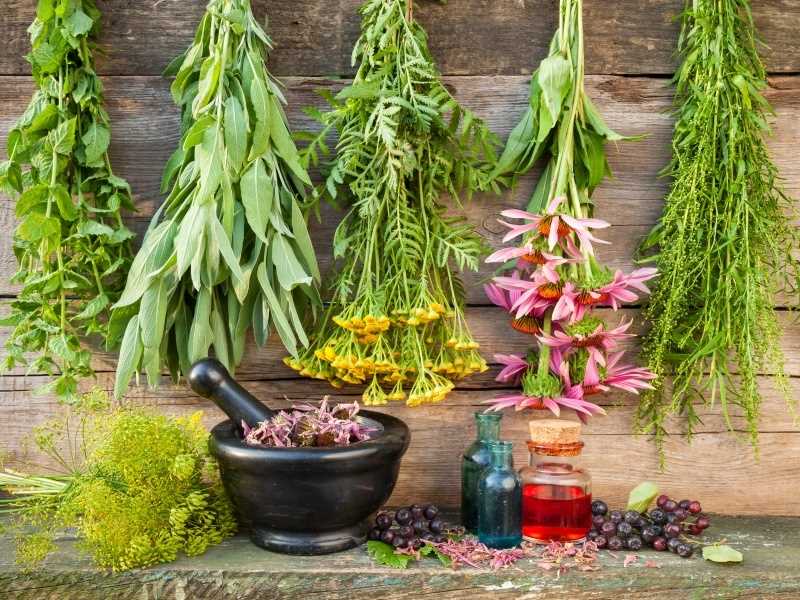
Another benefit of medicinal garden plants and flowers is the potential cost savings they can provide. Instead of purchasing expensive supplements or pharmaceutical drugs, you can utilize the natural remedies growing in your garden. This can help you reduce healthcare costs and provide a more affordable solution for maintaining your health and well-being.
In conclusion, cultivating medicinal garden plants and flowers offers numerous benefits for your health, the environment, and your overall well-being. These plants provide natural remedies, sustainable health solutions, improve air quality, enhance your garden’s aesthetic appeal, offer educational opportunities, and can even save you money. Consider incorporating these plants into your garden to enjoy the many benefits they have to offer.
Natural Remedies for Various Conditions
1. Headache and Migraine Relief
Headaches and migraines can be debilitating, but there are several natural remedies that can help provide relief:
- Peppermint oil: Applying peppermint oil to the temples and forehead can help alleviate headache pain.
- Feverfew: Some studies suggest that feverfew may help reduce the frequency and intensity of migraines.
- Butterbur: Butterbur extract has been shown to be effective in preventing migraines.
2. Digestive Issues
Many medicinal plants and herbs can aid in digestion and relieve common gastrointestinal issues, such as:
- Ginger: Ginger has long been used to soothe digestive discomfort, including nausea and indigestion.
- Peppermint: Peppermint tea can help ease symptoms of irritable bowel syndrome (IBS), bloating, and gas.
- Chamomile: Chamomile tea has anti-inflammatory properties that can help soothe an upset stomach.
3. Stress and Anxiety Relief
Many medicinal plants and flowers have calming properties that can help reduce stress and anxiety:
- Lavender: The scent of lavender has been shown to promote relaxation and reduce anxiety.
- Valerian root: Valerian root is commonly used as a natural remedy for anxiety and insomnia.
- Passionflower: Passionflower can help calm nervousness and promote relaxation.
4. Skin Conditions
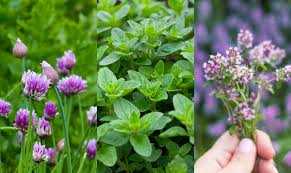
Various skin conditions can be treated or alleviated with the use of medicinal plants:
- Aloe vera: Aloe vera gel can be applied topically to soothe sunburns, rashes, and dry skin.
- Calendula: Calendula oil has anti-inflammatory properties that can help soothe eczema and dermatitis.
- Tea tree oil: Tea tree oil has antimicrobial properties that can help treat acne and fungal infections.
5. Respiratory Issues
Many medicinal plants and herbs can provide relief for respiratory conditions:
- Eucalyptus: Inhaling eucalyptus oil can help clear congestion and relieve symptoms of colds and respiratory infections.
- Marshmallow root: Marshmallow root has soothing properties that can help alleviate coughs and sore throats.
- Thyme: Thyme is known for its expectorant properties and can help loosen mucus and relieve coughs.
These natural remedies can be effective options for various conditions, but it’s important to consult with a healthcare professional before using any new treatment, especially if you have any underlying medical conditions or are taking medication.
Promoting Overall Wellness
Introduction
Promoting overall wellness is essential for maintaining a healthy lifestyle. One way to achieve this is by incorporating medicinal plants and flowers into your garden. These natural remedies can provide various health benefits, including improving physical and mental well-being.
Physical Benefits
- Boosting the immune system: Certain medicinal plants, such as echinacea and ginseng, are known for their immune-boosting properties. Including these plants in your garden can help strengthen your immune system and protect against illnesses.
- Pain relief: Plants like chamomile and lavender have analgesic properties, which can help alleviate pain and discomfort. Their soothing effects can provide relief from headaches, muscle aches, and menstrual cramps.
- Improving digestion: Many herbs, such as peppermint and ginger, have been traditionally used to aid digestion. Including these plants in your garden can help promote a healthy digestive system and relieve common digestive issues like indigestion and bloating.
- Regulating blood pressure: Some plants, like hawthorn and garlic, have been found to have beneficial effects on blood pressure. These plants can help regulate blood pressure levels and contribute to a healthier cardiovascular system.
Mental and Emotional Benefits
- Reducing stress and anxiety: The presence of beautiful flowers and aromatic plants in your garden can create a calming and relaxing environment. Plants like lavender and rosemary have been known to reduce stress and anxiety levels.
- Improving sleep quality: Certain plants, such as chamomile and valerian, have sedative properties that can aid in achieving a restful night’s sleep. Including these plants in your garden can promote better sleep and overall well-being.
- Enhancing mood: The colors, scents, and textures of medicinal plants and flowers can have a positive impact on mood and emotional well-being. Plants like rose or St. John’s wort are believed to have mood-lifting properties.
- Promoting cognitive function: Some plants, like ginkgo biloba and sage, are known for their cognitive-enhancing properties. These plants can help improve memory, concentration, and overall brain function.
Conclusion
Creating a garden with medicinal plants and flowers can be a great way to promote overall wellness. With their physical and mental health benefits, these natural remedies can contribute to a healthier and more balanced lifestyle. Whether you have a large backyard or a small balcony, there are various plants that can be grown to support your well-being.
Creating a Medicinal Garden: Essential Tips
1. Choose the right location
When creating a medicinal garden, it is important to choose the right location. Most medicinal plants and flowers thrive in areas with plenty of sunlight, so select a spot that receives at least 6-8 hours of direct sunlight per day. Additionally, ensure that the soil is well-draining and rich in organic matter.
2. Plan the layout
Before starting your medicinal garden, plan the layout carefully. Consider the mature size of each plant and provide enough space between them to prevent overcrowding and promote good air circulation. Group plants with similar growing requirements and consider creating themed sections, such as an herb garden or a flower bed.
3. Choose the right plants
Research and choose the right plants for your medicinal garden based on their medicinal properties, growing requirements, and your climate zone. Some popular choices include lavender, chamomile, peppermint, aloe vera, and echinacea. Make sure to select healthy plants from reputable nurseries or start from seeds or cuttings.
4. Prepare the soil
Prepare the soil before planting your medicinal garden to ensure optimal growth. Start by removing any weeds or grass and loosening the soil with a garden fork or tiller. Incorporate organic matter such as compost or well-rotted manure to improve soil fertility and drainage.
5. Provide proper care
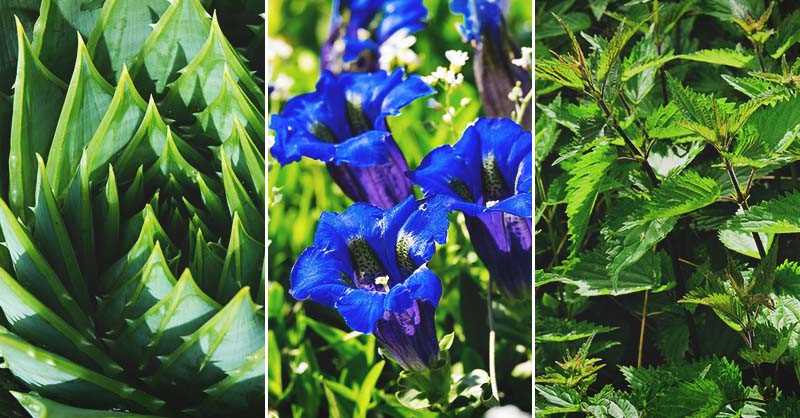
Once your medicinal garden is planted, provide proper care to maximize plant health and productivity. Water your plants regularly, but avoid overwatering, as some medicinal plants prefer slightly drier conditions. Mulch around the plants to conserve moisture and suppress weeds. Monitor for pests and diseases and take appropriate measures to control them.
6. Harvesting and storing
Learn about the proper harvesting and storing techniques for each medicinal plant in your garden. Some plants require harvesting their leaves, flowers, or roots at specific times, while others can be harvested continuously. Dry or preserve harvested plant parts in a cool, dry place to retain their medicinal properties.
7. Expand your knowledge
Continue to expand your knowledge of medicinal plants and their uses. Attend workshops, take online courses, or join local herb societies to learn from experts. Experiment with growing new plants and explore different ways to use them in home remedies or natural health products.
8. Stay safe
When working with medicinal plants, it is essential to prioritize your safety. Familiarize yourself with each plant’s potential side effects, interactions with medications, and proper dosage. Consult with a healthcare professional or a certified herbalist before using any medicinal plants for treatment purposes.
9. Enjoy the process
Creating a medicinal garden can be a rewarding and enjoyable experience. Take the time to appreciate the beauty and aromas of your garden as well as the healing potential it holds. Regularly spend time tending to your plants, observing their growth, and connecting with nature.
10. Share your knowledge
Share your knowledge and experiences with others who are interested in medicinal gardening. Offer advice, give plant cuttings, or create a community garden where people can come together to learn, share, and grow medicinal plants. By sharing your passion, you can inspire and empower others to create their own medicinal gardens.
Selecting the Right Plants and Flowers
When creating a medicinal garden, it is important to carefully select the plants and flowers that will be included. Here are some factors to consider when choosing the right plants and flowers for your garden:
1. Medicinal Properties
First and foremost, consider the medicinal properties of the plants and flowers you are interested in. Research the specific benefits and uses of each plant to ensure they align with your needs and preferences. Some plants may offer pain-relieving properties, while others may be known for their calming effects or immune-boosting qualities.
2. Climate and Growing Conditions
Take into account the climate and growing conditions of your area. Certain plants and flowers may require specific temperature ranges, sunlight exposure, and soil types to thrive. Consider whether your garden will have enough sunlight, access to water, and appropriate soil conditions for the plants you choose.
3. Space Available
Assess the amount of space available for your medicinal garden. Some plants and flowers may have sprawling growth habits and require more room to spread out, while others can be grown in smaller containers or raised beds. Take measurements and plan accordingly to make sure your garden is the right size for the plants you want to include.
4. Maintenance and Care
Consider the level of maintenance and care required for each plant and flower. Some plants may be more high-maintenance and require regular watering, pruning, and fertilizing. Others may be more resilient and require less attention. Assess your ability and willingness to care for the plants and choose accordingly.
5. Compatibility
Think about the compatibility of the plants and flowers you want to include in your garden. Some plants may have symbiotic relationships with each other, benefiting from being grown together. Others may be more prone to pests or diseases and could negatively impact neighboring plants. Research the compatibility of different plants to ensure they can coexist harmoniously in your garden.
6. Personal Preferences
Finally, consider your personal preferences when selecting plants and flowers for your medicinal garden. Choose varieties that you find aesthetically pleasing and that align with your personal taste. After all, your garden should be a space that brings you joy and relaxation, in addition to providing medicinal benefits.
By considering these factors and conducting thorough research, you can select the right plants and flowers for your medicinal garden. Remember to always follow proper planting and care instructions to ensure the health and vitality of your garden.
Designing a Functional Layout
When designing a medicinal garden, it is important to consider not only the aesthetic appeal of the plants and flowers but also how the layout can enhance their functionality. A well-designed layout will make it easier to access and care for the plants, promote healthy growth, and facilitate harvesting of medicinal herbs.
1. Organize plants by purpose
One way to design a functional layout is to organize the plants based on their purpose or use. For example, you can group plants that are used for common ailments, such as digestive issues or insomnia, in one area. This will make it convenient for caregivers or individuals to locate specific plants when needed.
2. Consider the growth requirements
Each plant has its own set of growth requirements, including sunlight, soil type, and water needs. It is important to design the layout in a way that accommodates these requirements. Place plants with similar needs together to ensure they receive the appropriate amount of sunlight and water.
3. Create pathways
Incorporating pathways into the garden design is essential for accessibility and ease of maintenance. A clear and well-defined pathway will help you navigate through the garden, making it easier to care for the plants and perform regular maintenance tasks.
4. Provide adequate spacing
Ensure that you provide adequate spacing between plants to allow for their growth and prevent overcrowding. Overcrowding can lead to disease spread and decreased air circulation, which can negatively affect the health of the plants.
5. Utilize vertical space
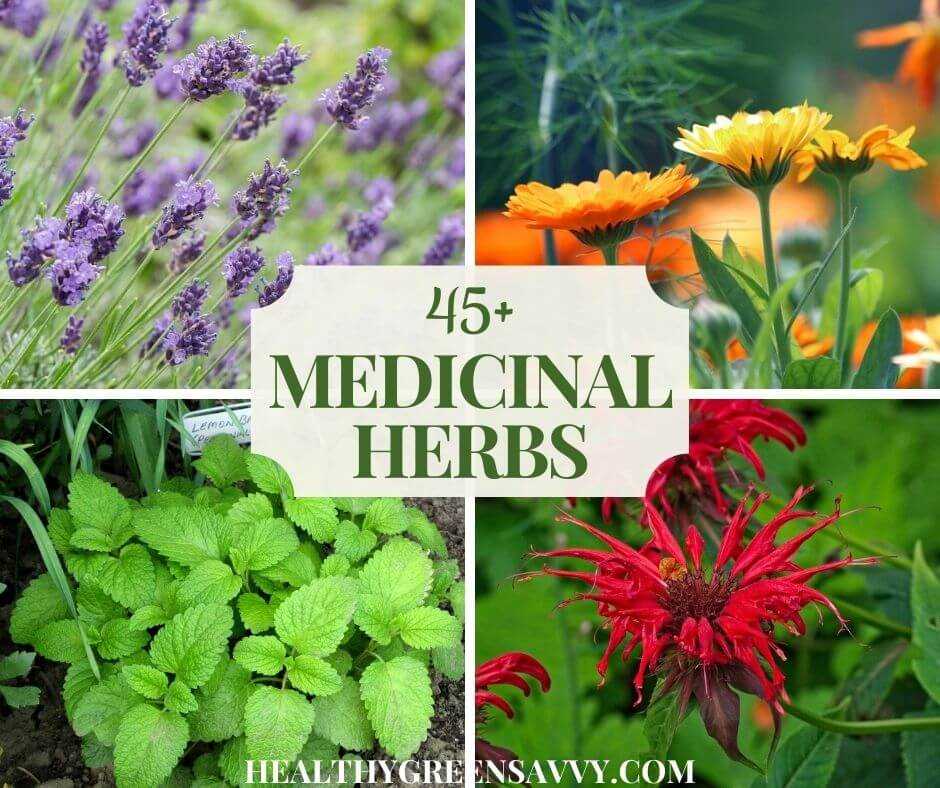
Make use of vertical space in your garden by incorporating trellises, arbors, or vertical planters. This will maximize the use of space and allow you to grow more plants, especially vining or climbing varieties.
6. Consider companion planting
Companion planting involves growing certain plants together to provide mutual benefits, such as pest control or nutrient enrichment. Research companion planting techniques and incorporate them into your garden layout to create a balanced and harmonious ecosystem.
7. Incorporate seating areas
To fully enjoy the beauty and benefits of your medicinal garden, consider incorporating seating areas or benches. These can provide a peaceful space for relaxation, meditation, and enjoying the scents and sights of the garden.
8. Label plants
Be sure to label your plants with their names and uses. This will help you identify each plant and its purpose easily. It will also be helpful for others who may visit or assist with the garden.
9. Prioritize accessibility
When designing your layout, prioritize accessibility so that anyone can easily access and move around the garden, including individuals with mobility challenges. Ensure that pathways are wide enough for wheelchairs or other mobility aids, and consider incorporating raised beds for easy reach.
10. Plan for future expansion
Finally, plan for future expansion. As your interest in medicinal gardening grows or as you discover new plants to incorporate, you may find the need to expand your garden space. Consider leaving room for growth and expansion in your layout, so that you can continue to cultivate and explore the world of medicinal plants.
Cultivating and Caring for Medicinal Garden Plants
Choosing the Right Plants
When cultivating a medicinal garden, it is important to choose plants that have a history of medicinal use. Some common examples include:
- Lavender: Known for its calming properties, lavender can be used to relieve stress and anxiety.
- Echinacea: This plant is often used to boost the immune system and shorten the duration of cold and flu symptoms.
- Peppermint: Peppermint leaves can be steeped in hot water to make a soothing tea that aids digestion.
- Calendula: Calendula flowers are often used in herbal remedies for their anti-inflammatory properties.
Preparing the Soil
The soil in your medicinal garden should be well-draining to prevent waterlogged roots. Before planting, amend the soil with organic matter, such as compost, to improve its fertility and texture.
Planting and Watering
Once you have chosen your plants and prepared the soil, it is time to plant them in your garden. Be sure to space them according to their specific requirements, as overcrowding can lead to disease and poor growth.
After planting, water your plants deeply and regularly, especially during dry spells. Aim to keep the soil evenly moist but not waterlogged.
Fertilizing and Mulching
Medicinal plants benefit from regular fertilizing to ensure optimal growth and production of medicinal compounds. Use organic fertilizers, such as compost or well-rotted manure, to provide a slow-release source of nutrients.
Mulching around your plants can help conserve moisture, suppress weeds, and regulate soil temperature. Use an organic mulch, such as straw or wood chips, and apply it to a depth of 2-3 inches.
Pest and Disease Management
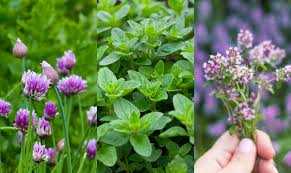
Preventing pest and disease problems is essential for maintaining healthy medicinal garden plants. Regularly inspect your plants for signs of pests or diseases, such as yellowing leaves or wilting.
If pests are present, try using natural methods such as handpicking, spraying with insecticidal soap, or introducing beneficial insects to control the population. For diseases, remove affected plant parts and dispose of them properly.
Harvesting and Storing
When it comes time to harvest your medicinal plants, do so in the morning after the dew has evaporated. Select the healthiest parts of the plant, such as leaves, flowers, or roots, depending on the specific plant.
To preserve the potency of the medicinal compounds, dry the harvested plant material thoroughly. Store it in airtight containers away from light and moisture.
Conclusion
By following these cultivation and care tips, you can create a thriving medicinal garden that provides a bounty of healing plants for years to come. Remember to research each plant’s specific needs and consult reliable sources for more information on their cultivation.
Soil Preparation and Planting Techniques
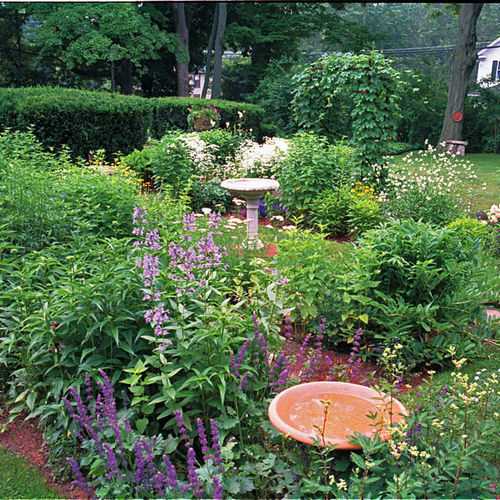
Preparing the Soil
Before planting medicinal garden plants and flowers, it is essential to prepare the soil properly. Here are some steps you can follow:
- Clear the area: Remove any weeds, rocks, or debris from the planting area.
- Loosen the soil: Use a garden fork or tiller to break up compacted soil. This will improve drainage and allow plant roots to penetrate more easily.
- Add organic matter: Incorporate compost or aged manure into the soil to improve its fertility and structure.
- Test the soil: Conduct a soil test to determine its pH level and nutrient content. This will help you determine if any amendments are necessary.
- Amend the soil: Based on the results of your soil test, add any necessary amendments, such as lime to raise the pH or sulfur to lower it.
Planting Techniques
Once the soil is prepared, you can proceed with planting your medicinal garden plants and flowers. Here are some planting techniques to consider:
- Planting depth: Dig a hole that is just deep enough to accommodate the plant’s root ball. Place the plant in the hole and backfill with soil, gently firming it around the roots.
- Spacing: Space the plants according to their mature size to allow for proper air circulation and growth.
- Watering: After planting, water the plants thoroughly to help settle the soil and reduce transplant shock.
- Mulching: Apply a layer of organic mulch around the plants to help conserve moisture, suppress weeds, and regulate soil temperature.
- Staking: If necessary, provide support for tall or weak-stemmed plants by staking them to prevent breakage.
Following these soil preparation and planting techniques will help ensure the success of your medicinal garden by creating an optimal environment for plant growth. Happy gardening!
Proper Watering and Pruning Methods
Proper watering and pruning methods are essential for maintaining the health and vitality of medicinal garden plants and flowers. In order to ensure their optimal growth and productivity, it is important to follow these key practices.
1. Watering:
Watering the plants in your medicinal garden is crucial for their survival and well-being. Here are some important guidelines to follow:
- Consistency: Establish a consistent watering schedule to provide plants with regular moisture.
- Deep watering: Water deeply, allowing the water to reach the roots. This promotes stronger root growth.
- Timing: Water in the morning or evening to avoid excessive evaporation during the heat of the day.
- Proper drainage: Ensure that your garden has proper drainage to prevent waterlogged roots, which can lead to root rot.
- Observation: Observe the plants for signs of underwatering or overwatering, such as wilted or yellowing leaves. Adjust watering accordingly.
2. Pruning:
Pruning is a necessary practice for maintaining the health, shape, and productivity of medicinal plants and flowers. Follow these pruning methods for optimal results:
- Clean tools: Use clean and sharp pruning tools to prevent the spread of diseases.
- Timing: Prune during the dormant season or after flowering, depending on the specific plant.
- Remove dead or diseased branches: Remove any dead, damaged, or diseased branches to prevent the spread of diseases and promote healthy growth.
- Thinning: Thin out overcrowded branches to allow better airflow and light penetration, which promotes overall plant health.
- Shaping: Prune to shape the plants according to their desired form and size.
By following these proper watering and pruning methods, you can ensure the vitality and productivity of your medicinal garden plants and flowers. Remember to adjust your watering and pruning practices based on the specific needs of different plant species.
Harvesting and Using Medicinal Garden Plants
Harvesting medicinal plants from your garden is a rewarding process that allows you to benefit from the healing properties of these natural remedies. Here are some tips on how to properly harvest and use your medicinal garden plants:
1. Timing
It is important to harvest your medicinal plants at the right time to ensure the highest potency of their medicinal properties. Generally, harvesting should be done when the plants have fully matured and are in their peak growing season. This is usually during the morning when the plant’s oils are most concentrated.
2. Tools
Use a pair of clean, sharp garden scissors or pruning shears to harvest your plants. Make sure the tools are clean to prevent the spread of disease and ensure a clean cut that promotes healing in the plant.
3. Harvesting Techniques
When harvesting leaves, flowers, or stems, always cut above a node or joint to encourage further growth. For roots, carefully dig around the plant to extract them without damaging the main root system. Avoid harvesting more than a third of the plant to allow it to continue growing and thriving.
4. Drying
Drying medicinal plants is a crucial step to preserve their potency and prevent them from spoiling. After harvesting, gently wash the plant material to remove any dirt or debris. Then, spread the plants on a clean, dry surface in a well-ventilated area away from direct sunlight. Allow the plants to air dry completely until they become brittle and easily crumble.
5. Storage
Store your dried medicinal plants in airtight containers, such as glass jars, in a cool and dark place. Make sure to label each container with the name of the plant and the date of harvest to keep track of their potency. Stored properly, dried medicinal plants can retain their potency for up to a year.
6. Using Medicinal Garden Plants
There are several ways to use your harvested medicinal garden plants. Some common methods include:
- Making herbal teas by steeping the dried plants in hot water
- Creating tinctures or extracts by soaking the plants in alcohol or vinegar
- Infusing oils by placing dried plants in carrier oils for topical applications
- Creating poultices or compresses by crushing or grinding the dried plants
It is important to do your research and consult with a qualified herbalist or natural health practitioner before using any medicinal plants, as they can interact with medications and have individualized effects on different people.
Questions and Answers:
What are some common medicinal plants and flowers that can be grown in a garden?
Some common medicinal plants and flowers that can be grown in a garden include aloe vera, chamomile, lavender, peppermint, and echinacea.
How can I use aloe vera as a medicinal plant?
Aloe vera gel can be applied topically to treat burns, cuts, and insect bites. It can also be consumed orally to help with digestion and boost the immune system.
What are some health benefits of chamomile?
Chamomile has a calming effect and can be used to treat anxiety and insomnia. It can also soothe stomachaches and help with digestion.
Can lavender be used for medicinal purposes?
Yes, lavender oil has many medicinal properties. It can be used to relieve stress and anxiety, treat skin conditions like eczema and acne, and promote a good night’s sleep.
What is echinacea used for?
Echinacea is commonly used to boost the immune system and prevent or shorten the duration of the common cold. It can also be used to reduce inflammation and relieve pain.







